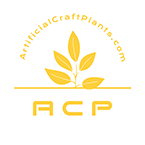Material Selection for Artificial Plants: A Guide for International Traders
Artificial plants have evolved from simple decorative items to sophisticated design elements that can significantly enhance any space. However, the quality and durability of these plants heavily depend on the materials used in their construction. For international traders, selecting the right materials is crucial to ensure product longevity, customer satisfaction, and business success.
Why Material Matters in Artificial Plants
The choice of material in artificial plants affects several key aspects:
- Realism: The texture and color of the material determine how lifelike the plant appears.
- Durability: Different materials have varying resistance to fading, wear, and environmental factors.
- Safety and Compliance: Materials must meet international standards for non-toxicity, eco-friendliness, and fire resistance.
- Market Positioning: Premium materials can command higher prices and improve customer retention.
Poor material choices can lead to brittle, faded, or overly plastic-looking products, which can damage a business’s reputation and profitability.
Comparing Premium Artificial Plant Materials
| Material Type | Pros | Cons | Best Use |
|---|---|---|---|
| PU (Polyurethane) | - Soft, flexible, highly realistic texture - Excellent durability |
- Higher cost | - High-end, lifelike trees and plants |
| PE (Polyethylene) | - UV-resistant, durable, weatherproof - Cost-effective |
- Less flexible than PU | - Outdoor plants, vertical gardens |
| Silk Fabric | - Elegant appearance, soft texture - Natural look |
- Fades without UV treatment - Not suitable for outdoor use |
- Indoor flowers, delicate foliage |
| PVC (Polyvinyl Chloride) | - Affordable, durable, fire-resistant | - Less realistic, potential environmental and health concerns | - Budget indoor plants, decorative accents |
| EVA (Ethylene Vinyl Acetate) | - Lightweight, bendable, waterproof | - Less detailed, may not look as realistic | - Artificial succulents, tropical leaves |
- Pro Tip: For high-end markets, prioritize PU and PE for their superior realism and durability.
How to Identify High-Quality Artificial Plant Materials
-
Assess Realism of Texture and Color:
- PU and PE should feel soft and flexible.
- Silk should have a natural sheen.
- Look for variations in color and dimension for a more natural appearance.
-
Ensure UV and Weather Resistance:
- For outdoor plants, ensure materials have built-in UV inhibitors and are tested for weather resistance.
- Look for certifications or guarantees from suppliers.
-
Verify Compliance with International Standards:
-
Evaluate Durability and Maintenance Needs:
- Premium PU and PE plants last 5-10 years.
- Silk requires indoor placement.
- Understand maintenance requirements for different materials.
Common Myths About Artificial Plant Materials
-
"All plastic plants look fake."
- Reality: Modern artificial plants made from PU and PE can be indistinguishable from real plants.
-
"PVC is the best choice because it’s cheap and fire-resistant."
- Reality: While PVC is affordable and fire-resistant, it lacks the realism of PU and PE and has potential environmental and health risks.
Conclusion
For international traders, selecting premium artificial plant materials is a strategic decision that ensures product quality, customer satisfaction, and long-term business success. By choosing materials like PU and PE for their realism and durability, and silk for indoor applications, traders can meet the demands of a sophisticated market while maintaining high standards of quality and compliance.
--
-
Explanation: Offers tips on choosing the most realistic artificial plants. ↩
-
Explanation: Explains the importance of UV resistance in artificial plants. ↩
-
Explanation: Official website for REACH regulations. ↩
-
Explanation: Official information on RoHS regulations. ↩
-
Explanation: Information on CA Prop 65, a relevant standard for some markets. ↩
-
Explanation: Provides maintenance tips for artificial plants to ensure their longevity. ↩
-
Explanation: Lists highly realistic artificial plants, debunking the myth that all plastic plants look fake. ↩
-
Explanation: Discusses the toxic nature of PVC, providing a reason to choose other materials over it. ↩

Hello everyone, I'm Li!By day, I'm a seasoned expert in the artificial plant industry, starting from the factory floor and working my way up to running my own successful business. In my free time, I’m passionate about running and often join trail runs with friends.Here to share what I've learned—let's grow together!


